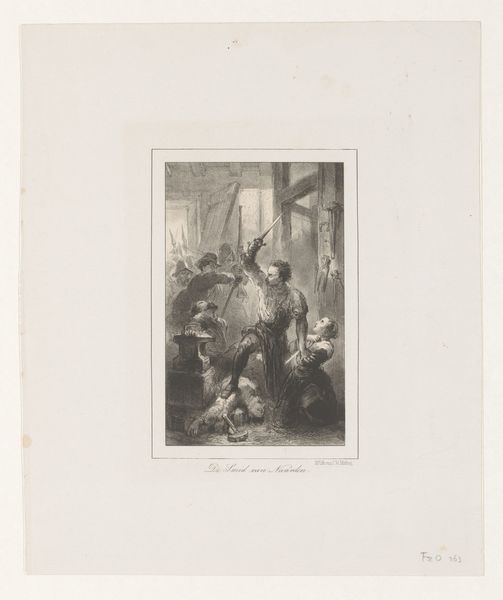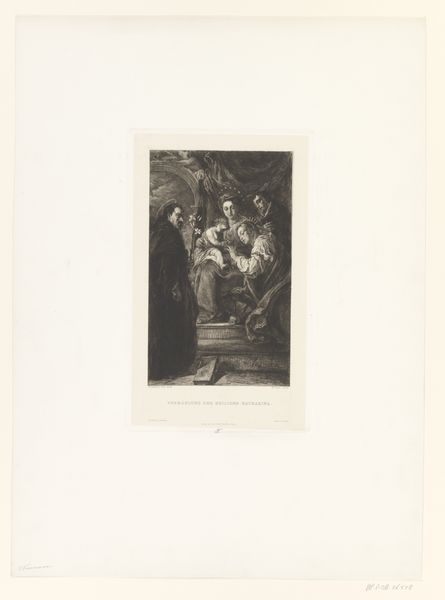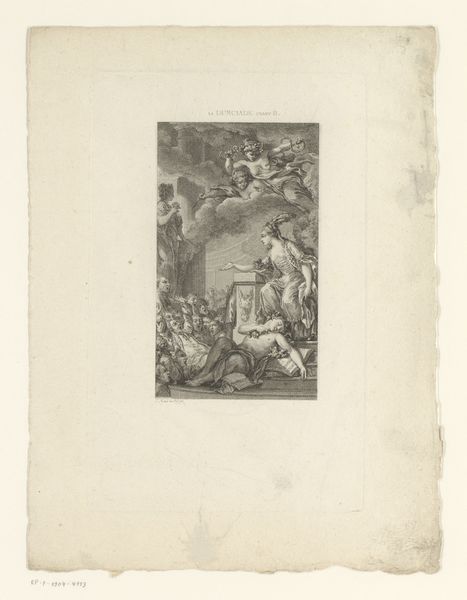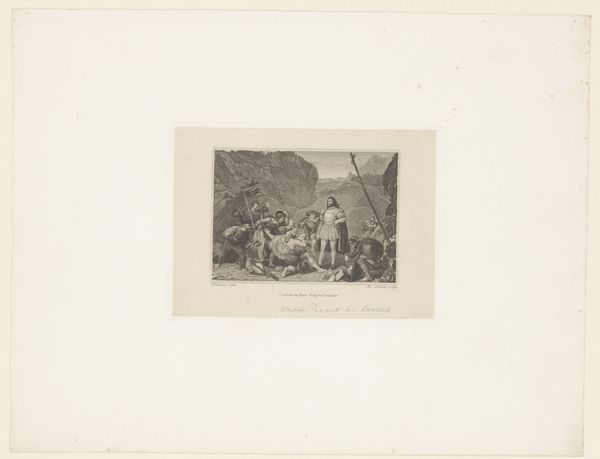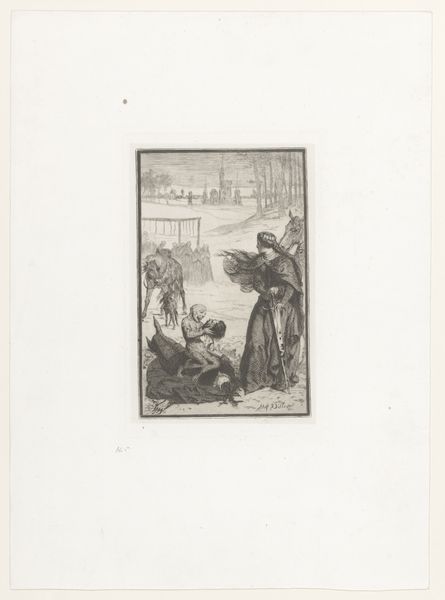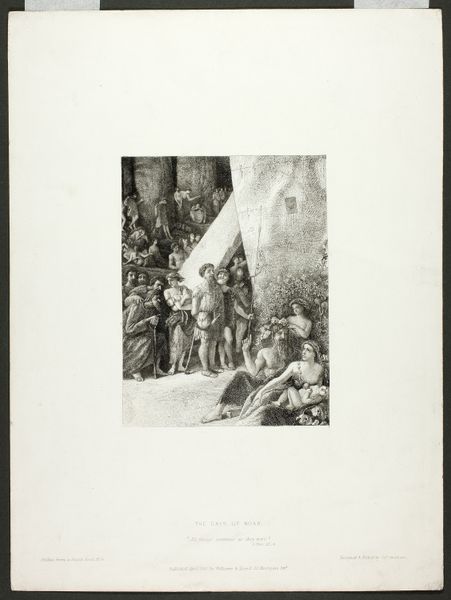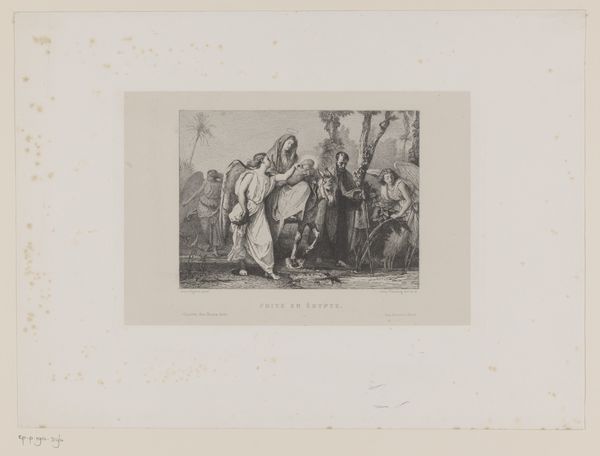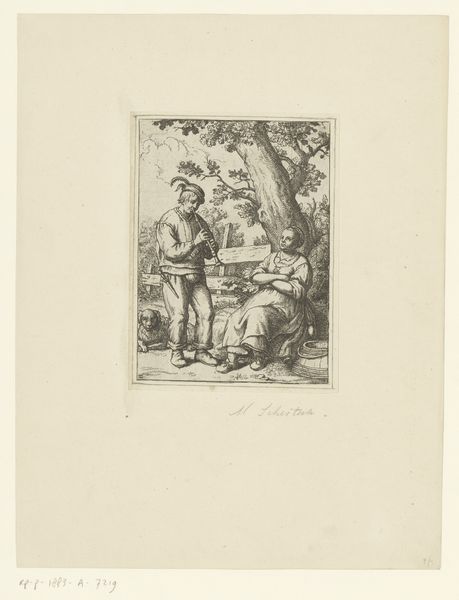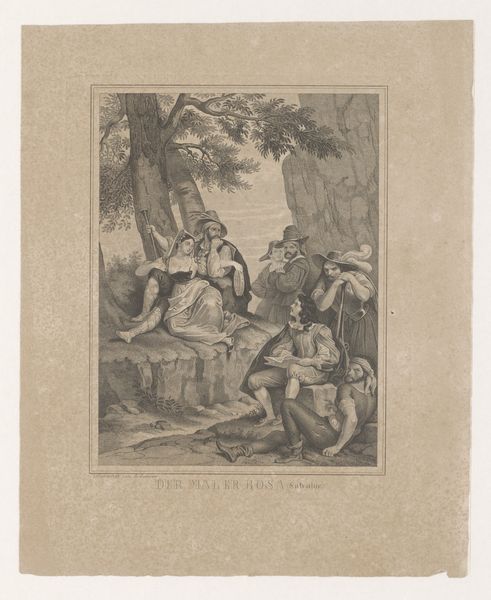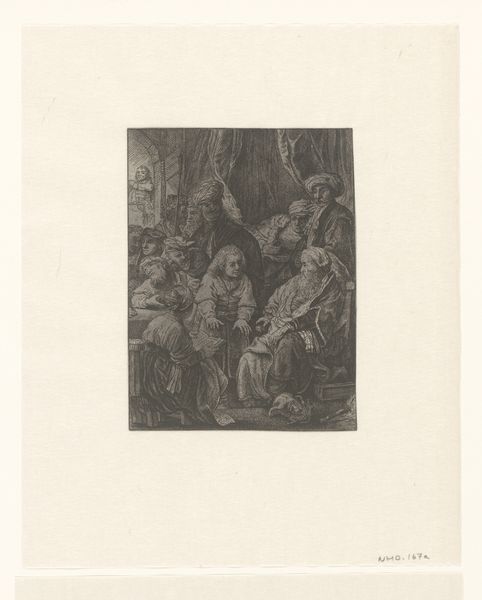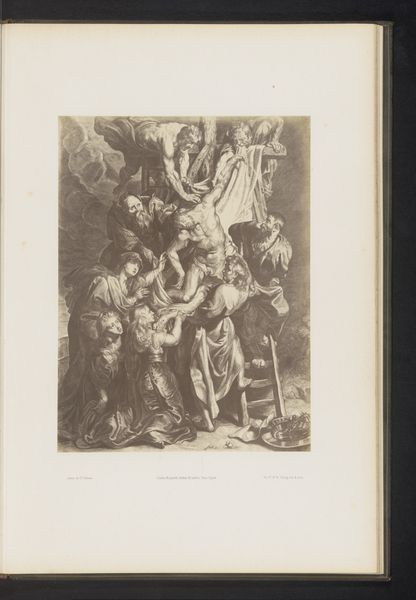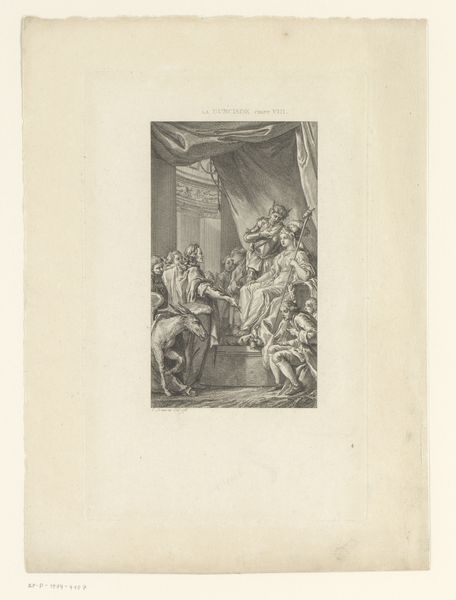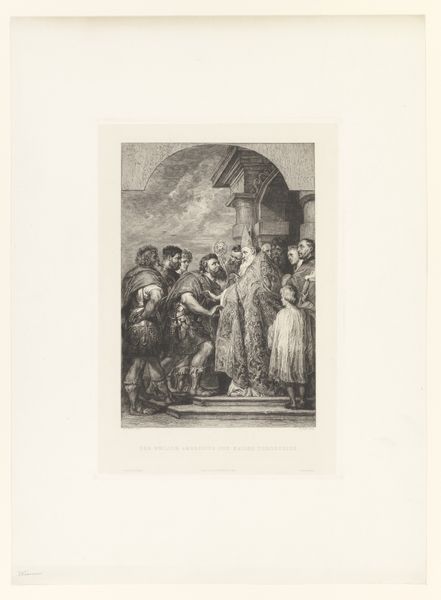
print, etching, paper, engraving
#
narrative-art
# print
#
etching
#
paper
#
romanticism
#
history-painting
#
engraving
Dimensions: height 233 mm, width 161 mm
Copyright: Rijks Museum: Open Domain
Curator: Allow me to introduce "Scène uit Wallenstein van Friedrich Schiller", an etching and engraving on paper by Edouard Schuler, likely created between 1816 and 1882. Editor: The texture created through that etching process gives it an incredible depth. It almost looks like a charcoal drawing at first glance, a shadowy camp scene. Curator: Indeed. Schuler seems to have aimed for theatrical intensity. The print illustrates a scene from Friedrich Schiller's play, Wallenstein, a hugely popular drama that examined the Thirty Years' War and questioned authority, resonating deeply with contemporary political concerns of the 19th century. Editor: The composition, even with all these clustered figures, draws the eye right to the man in the center—Wallenstein, I presume? His body language is very dramatic. Curator: Precisely! He’s the focal point. Look how Schuler uses light and shadow to highlight him and isolate him amongst his subordinates and followers. The artist aimed to underscore Wallenstein’s charisma and the complex moral ambiguities the character embodied for his audience. Schiller’s work had enormous impact. Editor: All of those details in the uniforms and faces, it really creates a chaotic, almost overwhelming atmosphere. Curator: War is inherently chaotic, of course. Representations like this also tell us something about the romanticising of historical figures and moments during this time, feeding a burgeoning sense of national identity and historical awareness. Schuler doesn’t just present the scene; he frames Wallenstein as a pivotal figure, open to varied interpretation by the viewer. Editor: The way the tents and trees in the background fade almost into abstraction contrasts with the sharply delineated foreground figures. Curator: It's a powerful staging effect, blurring the edges of the historical drama to allow viewers to consider how historical narratives resonate within their contemporary political and social settings. Editor: Looking at Schuler's dramatic use of light and shadow, and the level of detail he’s achieved through the etching, really highlights the technical skill involved in printmaking at that time. Curator: It's important to remember the political power of art like this—Schuler offers us not just a visual spectacle but a historical lens through which his contemporaries likely questioned and understood their own era. Editor: Well, regardless of political context, it is a dynamic example of printmaking from the Romantic era, with interesting formal complexities.
Comments
No comments
Be the first to comment and join the conversation on the ultimate creative platform.
